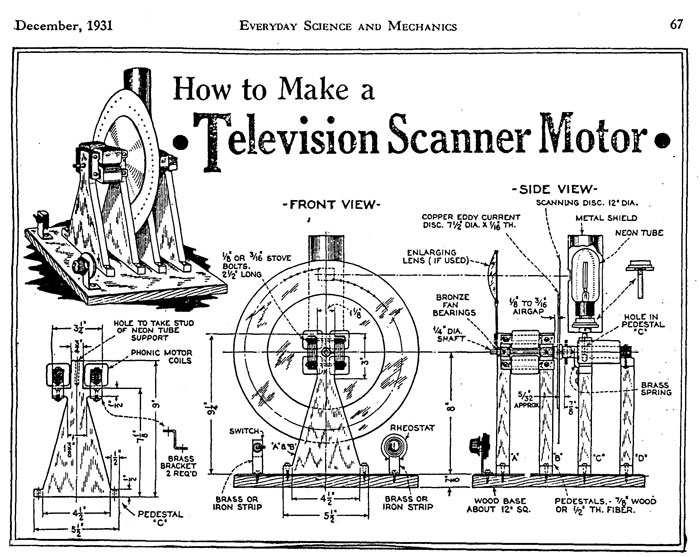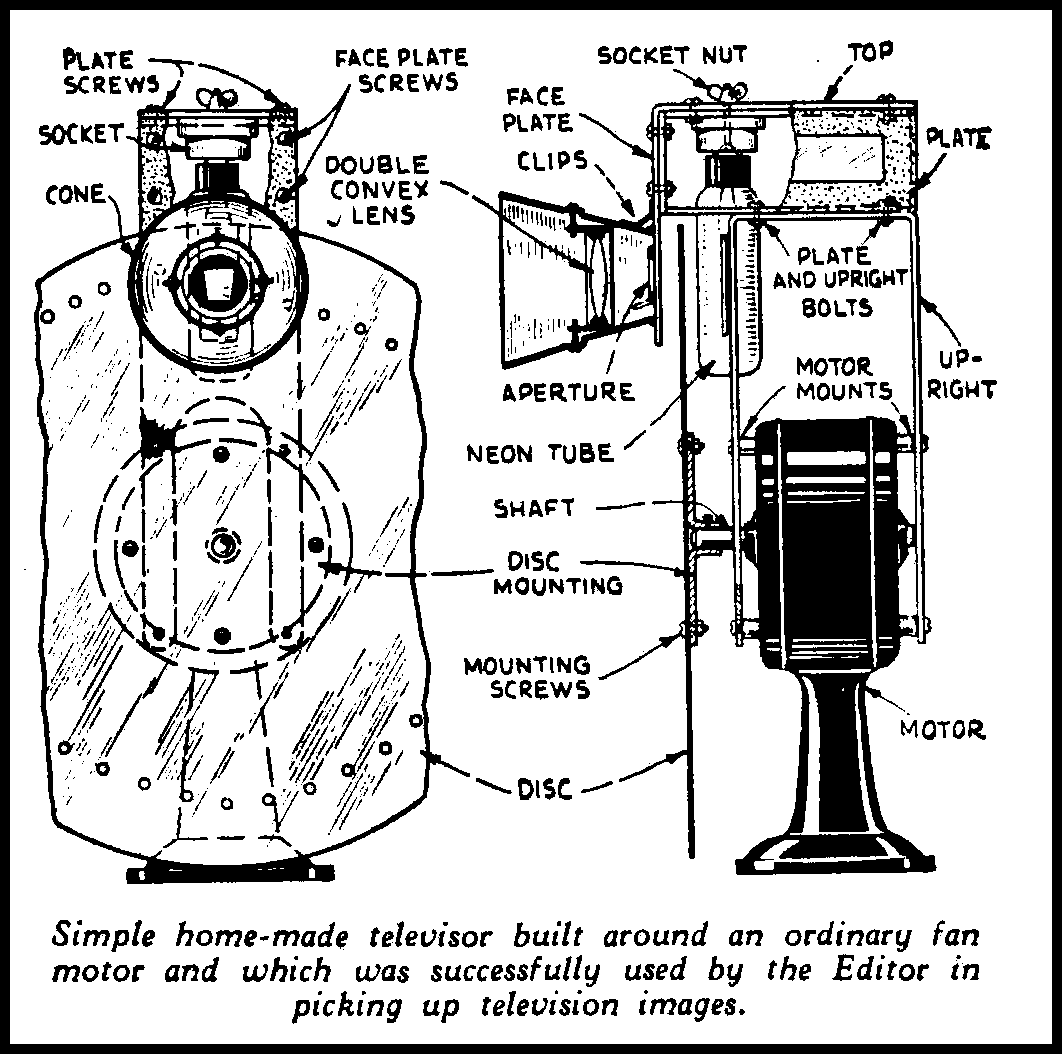|
Television Experimenters.com
Getting Started
How Does One Get Started in this Hobby?

If you are interested in the history of television, certainly the internet will be your number one source for material, but be aware that probably 80% of what see will be factual and accurate, but as much as 20% will be suspect and quite possibly just "spin". (That's what it's called these days.) The next best sources of material are books and magazines of the 20's through the 40's, such as Hugo Gernsback's various magazines: "Radio News", "Television News" and various text books, some of which are listed at the end of this page. You may even find some friends or associates, probably in their eighties by now, that remember those years when television first began. They may even have tried to receive the picture signals on equipment they built themselves. You won't be the first to find someone that remembers and has a good story for you.
Ebay is a good source for old books an magazines, but be prepared. The better ones do bring high prices. It might also help to spend some time in the larger libraries, especially those associated with local universities and colleges.
If you are interested in the hardware... You can start by first selecting something you might like to do. Usually the first project should be something pretty simple, but something that will produce a recognizable image. If you happen to have an existing piece of early apparatus, you might want to restore its original appearance and function, making up any broken or missing parts as necessary. If this happens to be a television receiver, you might even consider constructing a suitable camera, thereby enabling you to show actual images on the receiver.
Those of you with computer hardware and/or software skills, after becoming familiar with the characteristics of the early television formats, can work with and develop various new enhancement techniques, scan converters and image generators, possibly with EPROMs or the like. This area is wide open for the inventive mind.
If however, you are starting from scratch as most do, much depends on your skill level and what tools and materials that you have available. Many of the parts of television apparatus can be built from wood or metal. The drawing shown above is an example of a part of a construction article from a magazine in 1931. This type of artical was common in those days, in newspapers too.
In constructing these apparatus, metal might be the preferred material for a certain part, but wood can often work as well if the proper wood is selected and certain allowances made for the difference in materials. For example, scanning disks are generally made from aluminum sheet, but many experimenters instead are using thin bakelite, brass or even vinyl sheet. John Logie Baird of Scotland, in his earliest work used cardboard from hat boxes and later went to using plywood. A few years ago, an experimenter friend of mine used an old 12' LP record. This is an opportunity to exercise and demonstrate your ingenuity.
Another part of this site tells you how to make your own scanning disk in the same manner used by many of the experimenters in 1928. The method used doesn't necessarily produce a precision disk, but it won't cost you much and might in fact work.
As a beginning, it helps to have a plan. Either one you have developed or one from a book or magazine. You might also consider if you want there to be a historic significance in your project, or rather have it reflect some of you own ideas. The home page of my web site shows a photo at the top of the page, of a receiver I built following a plan in the C. F. Jenkins book "Radio-Movies", circa 1929. Incidentally, if you will send me a S.S.A.E., I will send you a good copy of the complete article.
This article in this magazine is actually about building a motor to rotate a scanning disk, the plan shows how to build almost the entire set. This particular plan is interesting because it copies a motor design used by C. F. Jenkins in a kit sold about this same time. The main difference is that this plan shows wood being used for most of the structure whereas the Jenkins kit used aluminum castings. This set is very representative for those early broadcasts. It would make a fine addition to an existing early radio receiver collection.
|
If you built this up just as the plan shows, it would be a very interesting show piece. If you wanted to actually have this receiver produce pictures, that would be another matter. At this time, I think that I should point out that this receiver has no means of
producing an image on its own. You would need some sort of signal source to actually produce pictures. And if you provided a signal source, i.e. a camera, there is no way to achieve synchronization between this receiver and the camera except by constantly adjusting a rheostat in the fan motor circuit. As impractical as this my seem, the majority of experimenters in the early years did exactly that and
were fascinated by the fact that just for an instant, they saw a picture of something they recognized. It made their day for them and that is how television
started. These examples are only two of the hundreds of designs that were developed and published in the
early years of television. Experimenters today can either go with these just as they are, or they can modify to suit themselves and in many cases improve on the performance without distracting from the historic significance. |
|

|
Here is a list of reference books:
- "Distant Vision" by Elma G. Farnsworth, (1990)
- "Experimental Television" by A. F. Collins, (1932)
- "Radio Movies" by C. F. Jenkins, (1929)
- "Radio Vision" by C. F. Jenkins,(1925)
- "The History of Television, 1890 to 1941" by Albert Abramson,
(1987)
- "The Great Television Race" by Joseph H. Udelson, (1982)
- "Newnes Television & Short Wave Handbook" by F. J. Camm,
(1934)
- "Television To-Day and Tomorrow" by Mosley & Chapple, (1933)
- "Tube" by D. E. Fisher & M. J. Fisher, (1996)
- "The Story of Television" by George Everson, (1949)
- "Television Theory and Practice" by Reyner, (1934)
- And of course, there's always: "The Mechanics of Television"
- by your truly, Peter Yanczer, (1987)
|

All rights reserved.
|